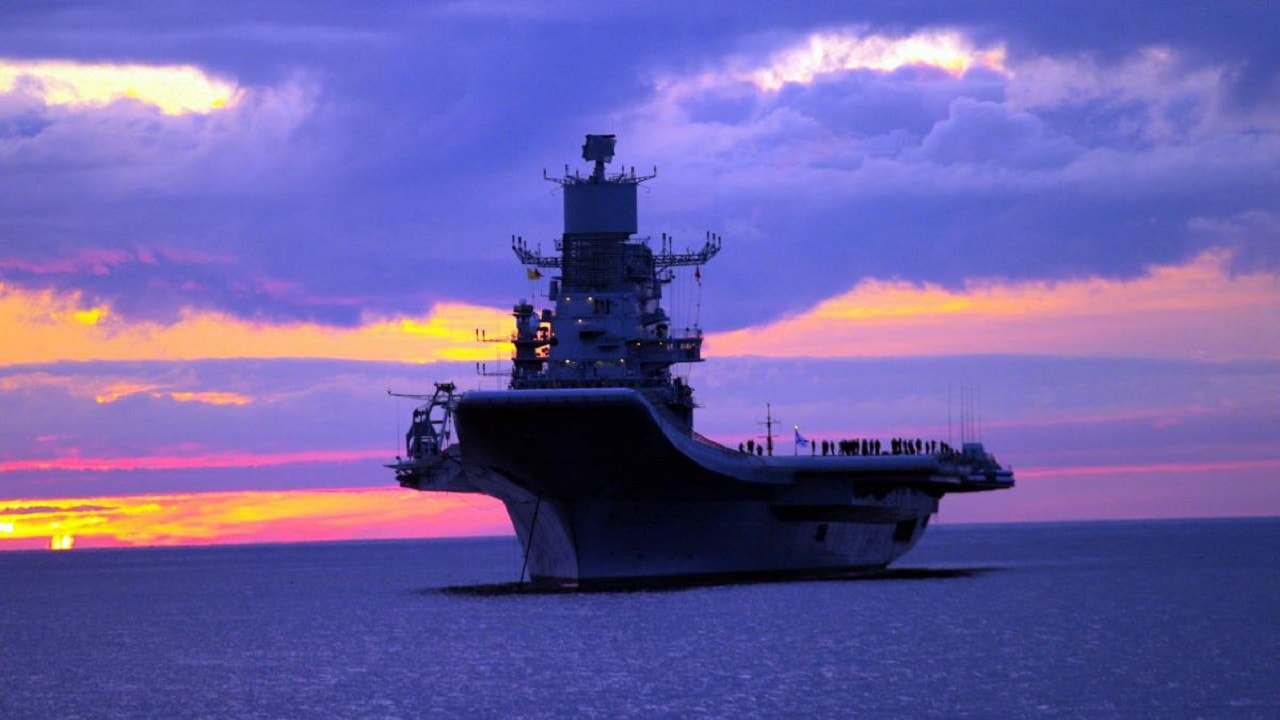History has a way of repeating itself, and often not in a good way. That was clear as a fire broke out on the Indian Navy’s flagship aircraft carrier INS Vikramaditya, while the vessel was operating off the Karnataka coast. The fire was quickly brought under control, and no casualties were reported.
The 45,400-tonne carrier was undergoing sea trials following an 18-month refit.
“During a planned sortie for conduct of trials at sea, an incident of fire was reported on board INS Vikramaditya. The fire was brought under control by the warship’s crew using fire-fighting systems. No casualties have been reported. A board of inquiry has been ordered to investigate,” the India Navy said in a statement to the Times of India news outlet.
It is unclear what was the extent of the damage, although the fire was described as small and was quickly contained. Yet, this is now the third time that a fire has threatened the crew’s safety on the warship. In April 2019, a fire broke out in the boiler room, resulting in the death of a naval officer from smoke inhalation, and several others were injured after fighting the blaze. A second fire occurred in May 2021 while the ship was undergoing its refit.
In addition, in 2016, two people were killed when a toxic gas leak occurred during maintenance work in the carrier’s sewage treatment plant compartment.
Problem Aircraft Carrier
In many ways, the issue isn’t one of poor maintenance or servicing of the warship by the Indian Navy, but rather could be due to its Soviet origins.
The vessel was actually designed as an improved variant of the Soviet Navy’s Kiev-class, and featured multiple improvements that included a phased array radar, extensive electronic warfare installations, and an enlarged command and control suite. It was also among the first Soviet warships to utilize an advanced computer network system, but it took years to fix all the problems.
In fact, the hull was laid down in 1978 at Nikolayev South (Shipyard No.444) in Ukraine, and the vessel was launched in 1982. However, due to software bugs in the new command and control system, the warship wasn’t commissioned into the Soviet Navy in December 1987.
Originally commissioned as Baku, she served in the Soviet Navy for just four years, from 1987 to 1991. Following the dissolution of the Soviet Union, she was renamed Admiral Flota Sovetskogo Soyuza Gorshkov and continued to serve with the Russian Navy until she was decommissioned in 1996 due to high operating costs. The carrier had only recently returned to service after undergoing repairs for a boiler room explosion that had occurred two years earlier.
Unable to maintain the warship, Moscow looked for foreign buyers, and it was subsequently sold to India.
Rechristened INS Vikramaditya, she was commissioned into the Indian Navy on November 16, 2013, and officially entered service the following June. Throughout much of the Cold War, India was really the only regional power in the Indo-Pacific to operate a true carrier, but it has since lost that advantage as China’s People Liberation Army Navy (PLAN) has put considerable resources towards its own carrier development, and launched a third flattop just last month.
Yet, instead of having a modern carrier, India essentially overpaid for a warship that might have otherwise been sent to the scrap yard. Fortunately for New Delhi, it has learned from its past mistakes and in August, will commission its first indigenously-designed and domestically-constructed aircraft carrier, INS Vikrant (Hindi for “Courageous”). Production of the carrier has been ongoing for more than two decades.
Now a Senior Editor for 1945, Peter Suciu is a Michigan-based writer who has contributed to more than four dozen magazines, newspapers and websites. He regularly writes about military hardware, firearms history, cybersecurity and international affairs. Peter is also a Contributing Writer for Forbes.

